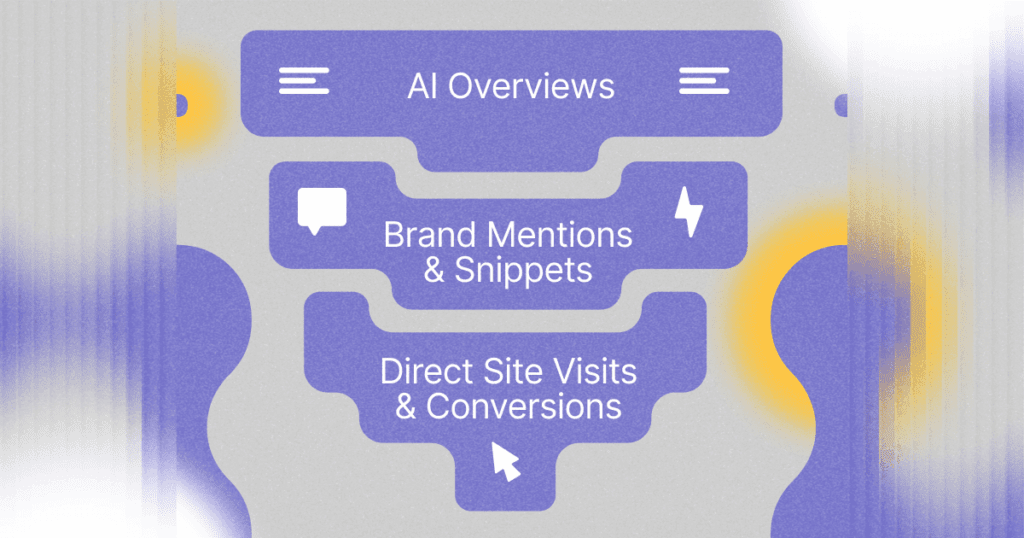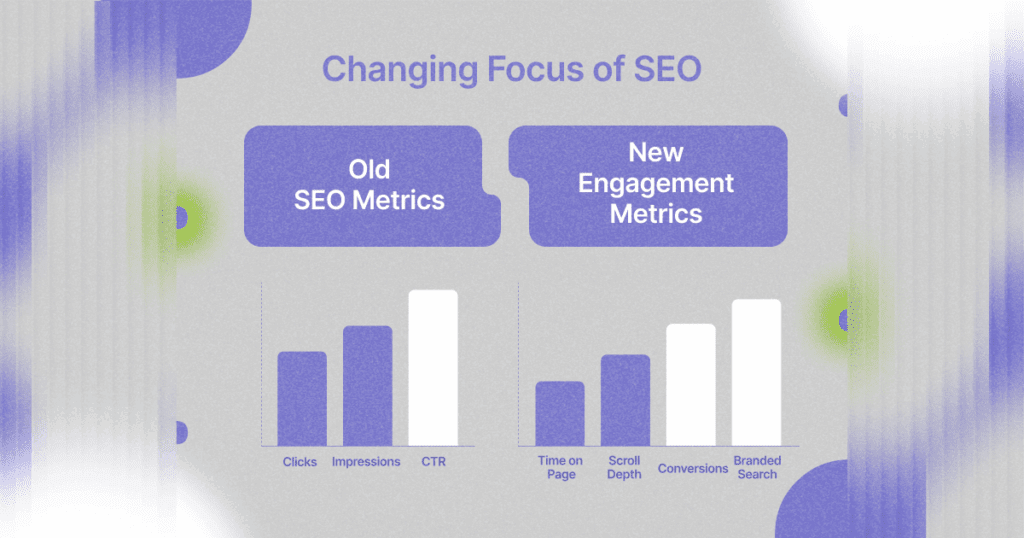- What Are AI Overviews and What is Their Impact on SEO?
- Why You May See a Drop in Traffic
- Traditional KPIs Are Becoming Less Useful
- How Should You Adapt?
- Write Content That Earns the AI’s Trust
- Create Content Hubs and FAQ Pages
- Add Context Beyond the Quick Answer
- Shift Focus to Engagement Metrics
- With AI, the rules of SEO haven’t disappeared, they’ve evolved.
With the official rollout of AI overviews, Google is changing the game again. Websites are seeing a drop in organic search traffic, even when their rankings haven’t changed. Google is now summarizing answers directly on the results page, often removing the need for users to click through to websites. This shift has big implications for your content strategy and how you measure success.
What Are AI Overviews and What is Their Impact on SEO?
AI overviews are generated summaries which appear at the top of some Google searches. Instead of showing a list of blue links, Google now pulls information from multiple sources and compiles it into a single response.

Why You May See a Drop in Traffic
As users get their answers directly in the search results, there is no longer a need to visit your site. These so-called “zero-click” searches are becoming the norm, especially for how-to, health, finance and definition-style queries. Your content can be quoted, however the user will never see your domain. This can result in fewer visits in Google Analytics and lower clicks in Google Search Console.
Traditional KPIs Are Becoming Less Useful
Metrics such as clicks, impressions and click-through-rate (CTR) may not reflect the real impact of your content. While content visibility may increase, they do not automatically result in clicks, therefore reducing the number of clicks and CTR on your queries.

How Should You Adapt?
While we can’t control Google’s AI Overviews, we can control how your brand shows up in this new environment. It is less about chasing the traffic, and more about staying useful, visible and trusted. Instead of focusing on clicks, focus on creating content that answers questions and earns attention, even without a visit.
Write Content That Earns the AI’s Trust
If you want your content to be pulled into AI Overviews, you need to give Google clear, accurate, and easy-to-parse information.
- Target questions your audience actually asks
- Use H2s and H3s with natural language (e.g., “How does [topic] work?”)
- Provide concise, accurate answers in the first few lines
- Use schema markup to structure your content
Regularly update your website content to keep it accurate. Old content with outdated references is one of the biggest reasons Google avoids pulling from a page.
Create Content Hubs and FAQ Pages
AI Overviews tend to pull from well-structured content. To give your pages a better chance of being referenced, organize your content in topic clusters.
Create a main page (pillar) that explains a broad concept, and link out to detailed pages (clusters) that go deeper into subtopics. This helps Google see your site as an authoritative resource on that subject.
Also consider adding FAQs to your most important pages. These can answer common questions in a clear, scannable format that AI can easily extract. Use real user language and don’t bury the answers deep in your content.
Add Context Beyond the Quick Answer
If Google’s AI is giving users a surface-level summary, it is important to deliver the depth they can’t get anywhere else.
- Provide real-world examples
- Offer opinions, statistics, case studies, or unique frameworks
- Build trust with author bios and credentials

Shift Focus to Engagement Metrics
If clicks are down, it doesn’t mean your content is failing, it just means the way people engage with it is changing. Start tracking what happens after a user lands on your page. Key metrics to monitor:
- Time on page: Are they staying to read?
- Scroll depth: Are they seeing the full content?
- Event tracking: Are they clicking, watching, downloading, or engaging?
- Conversions: Are you getting form fills, newsletter sign-ups, or quote requests?
Also look at branded search traffic. If more users are searching your company name + service, it could be a sign they saw you in an AI Overview and came back later. Tools like Google Search Console and Google Analytics can help track these signals.
With AI, the rules of SEO haven’t disappeared, they’ve evolved.
Where visibility once meant pageviews and rankings, it now includes brand mentions, AI citations, and information recall. Users may not click, but if they see your brand, remember your insights, and come back later, you’re still winning.
If you’re ready to rethink your content strategy for the AI-first search landscape, we’re here to help.
